As long as I can remember I wanted to document things. If I’d been early man I’d have been the guy doing drawings on the wall of the cave. (Hey, stop drawing selfies and get back to the scene of us hunting the mastodon!)
(Photo: Jason Aytes | 2006)
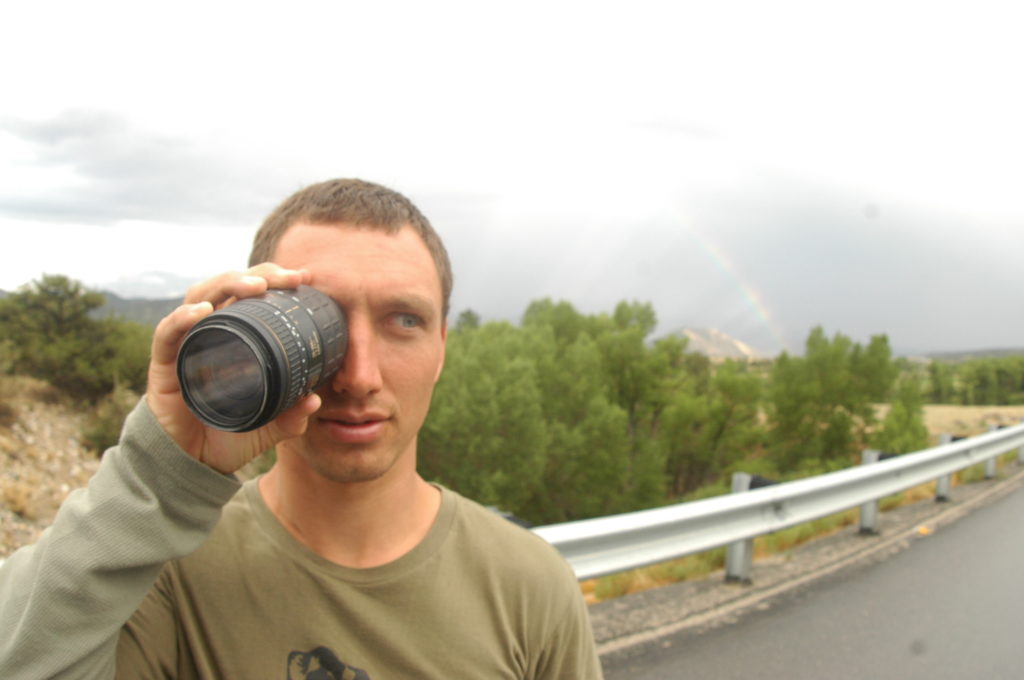
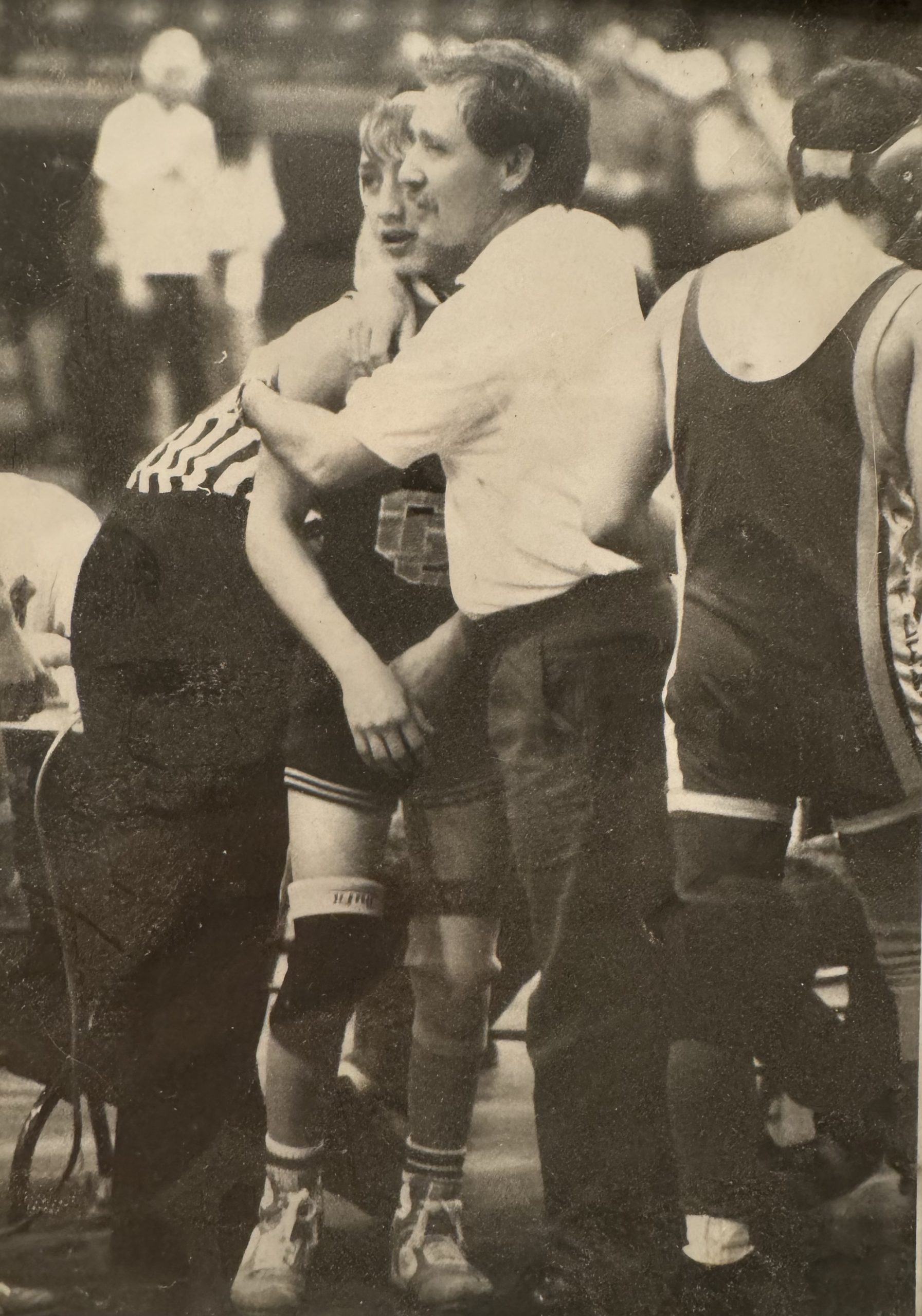
I Had a Polaroid camera when I was a kid and got ahold of other cameras whenever I could borrow one from my folks. When vhs cameras became available, my family got one and used it mostly to film school sports; wrestling and tennis for my sister and I. Aside from saving memories somewhere else besides our brains, the video camera sometimes gave us another advantage, a competitive one. We were able to do something generations before us could not. My sister could watch her tennis matches, I could watch my wrestling matches. Now we could learn from our mistakes because we could actually see them and try to correct them in our next competition. It helped, too. She was a state champ and I was twice on the state podium.
(Photo | 1992 | VA State Wrestling Tournament)
******* Fast forward ten years and I was using video-review to improve my whitewater kayaking skills. Everyone was! *******
Back to the 80s, that was the era of the VCR and a number of families with big ol’ VHS cameras, shooting from the bleachers. So in my spare time I started shooting nature stuff around my dad’s tree farm and goofy stuff with my pals, and eventually shot a bunch of skateboarding with my three friends who skated in our small town. We were so inspired by the Powell-Peralta Bones Brigade skate videos, we watched those everyday. Those videos inspired us to dream about skating, and when we went skating we took a lot of pretty crappy photos and video, but it was fun, and it was ours.
(Photo | 1990)

Truly, I’m happy I couldn’t put my hands on a camera before I was ten years old. Anyway, I was too busy fishing, hunting and being out in the woods. Wouldn’t trade that for any number of photos. Now, kids have every moment of their lives documented. My kids will be able to see themselves from beginning to end. How weird, wonderful, cool, sad and tragic is that? Not to them, it’s just normal. (With the brief mention of hunting and fishing above I feel it’s worthwhile to mention that I got into paddling (and outdoor industry business) because of those passions, somehow intertwined with a love and understanding of skateboarding and carving. But as far as paddling went, I was just looking for a canoe to fish out of…)
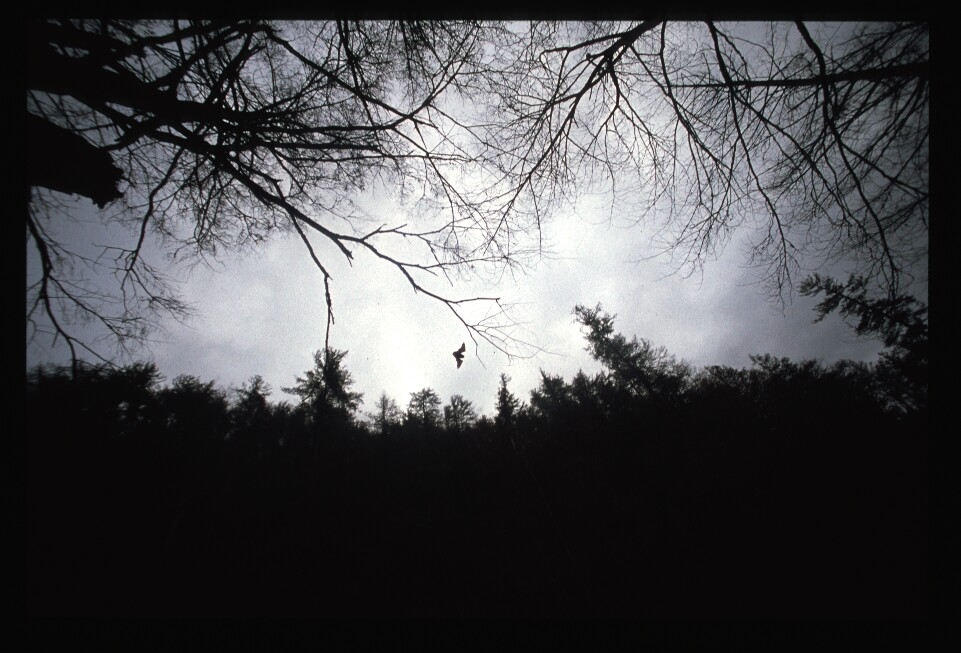
With my line of work in perspective I view photography and video as the only real product that is truly my own. I sell a lot of other people’s products. That’s what I do, I’m a sales rep. So when I can create moving or still images with a camera and then edit it, that’s my own thing, my art, my product. Me me me dot dot dot vomit emoji.
(Photo: Effort Inc | Linville Gorge | 2010)
When the internet was barely even a thing I was hauling a big ass camera around everywhere (VHS, then Hi8, then Mini DV and 35mm still cameras), shooting just whatever seemed interesting. Nothing special about that in particular. Lots of people had cameras. But this was the 1980s and 1990s, and I kept on doing this up into the early 2000s. I’m mean, I’m still doing it. In today’s time this isn’t unique, but even in the early 2000s nobody was walking around with an HD camera in their pocket. Now, everyone (including every child) with a phone has the power of instant photographer, instant videographer, instant post, publish! View, subscribe, SMASH THAT LIKE BUTTON, bring on the endorphins!
Shooting video footage became an obsession for me when I started kayaking. Incidentally, video + kayaking was sort of the formula that got me into the outdoor business. There were a handful of people making kayak films professionally at this time, and I liked watching all of those videos. Katie and BJ who made the Falling Down video series were the most famous in my eyes. They brought a style that was closest to what I liked and what I’d already been watching in skate videos. They created and developed characters and told stories with good footage. They were badass paddlers, and they carried cameras on every river. I’m taking in all this content, spending a ton of time on the water, buying the gear, selling some gear (started being a sales rep in ‘96) kayaking whenever I can fit it into my day. All the while I’m thinking, back in the early 90s I became a fan of 411 skateboard video magazine. What a cool concept and one that seemed replicable in paddlesports. I thought I’d try it. But first…
(Photo: Effort Inc | 1998 | Upper North Fork Catawba River with Falling Down Crew)
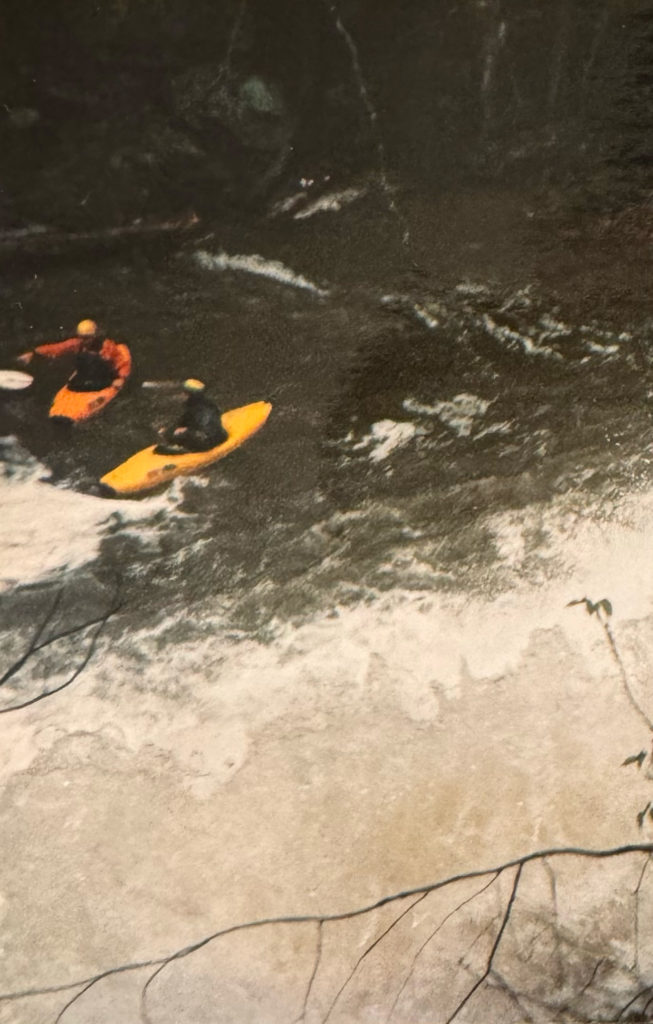
Dropping the Kids off and Buck Fever:
I had spent the better part of ‘98 and ‘99 shooting footage around the Southeast, plus one kayaking trip out to the Pacific Northwest. In ‘98 my pal Clem Newbold and I collaborated with our kayaking footage (with the help of kayaker, Biff Farrell and App State University’s video editing suite!) to make this short film we called Dropping the Kids off. We entered it into the National Paddling Film Festival where it received rather low marks. It was a good experience and proved to be the only time I ever used a true linear editing suite.
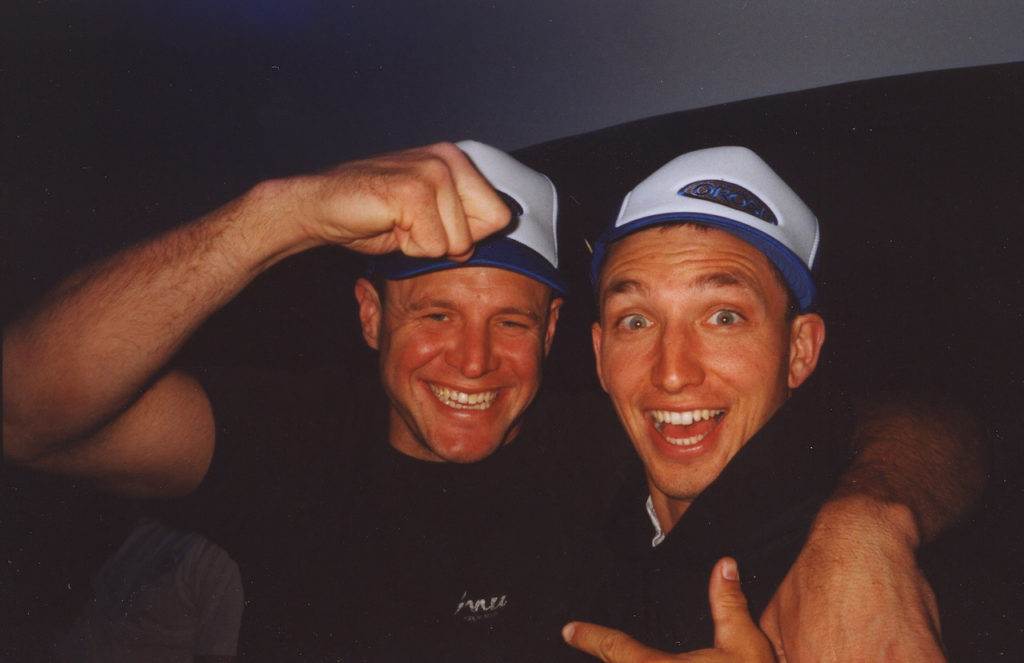
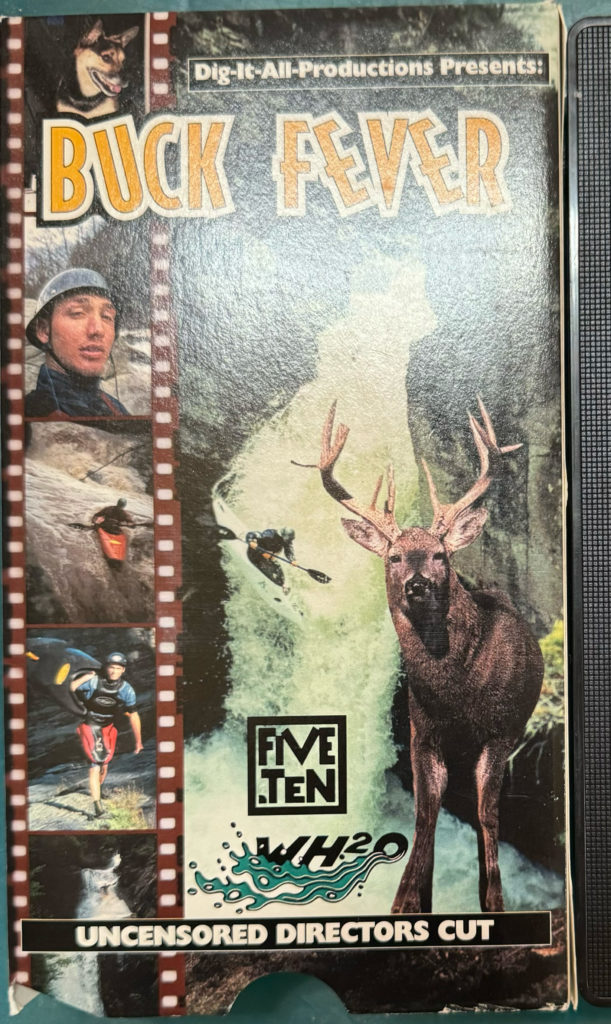
In 1999, my friends, Raymond Cotton, Andre Spino-Smith and Daniel DeLaVergne had been raving about this kayaker/videographer from Colorado, named Jed Selby. They kept suggesting he and I should meet up and put all our footage together. We did, and that marriage turned out the lovely child known as Buck Fever. Turns out we both had a lot of pretty decent footage with some sort of underlying storyline, but neither of us owned a computer or editing software. Fortunately my cousin, Jake, did own a new Mac G3 with an early version of Final Cut Pro. He and his wife invited Jed and I into their home that winter where we got a crash course in editing and turned out a kayak film we entitled, Buck Fever, to be duplicated on VHS and sold in kayak shops nationwide and internationally. We had a soundtrack thanks to some of our musician friends as well as a couple sponsors who gave us some product and a few dollars, not even enough to pay for VHS duplication – If you’re much younger than I (48 at the time of writing this) you’re probably saying, what the hell is a VHS? It’s one of the ways we watched videos before millennials had smartphones. Nowadays, a VHS is the block of plastic your grandpa uses as a doorstop.
By the time we had put out Buck Fever I was still trying to get my little business off the ground, being a sales rep. I had started out as an independent sales rep for a company Clem Newbold introduced me to. They made wooden paddles and composite helmets. At the time they were called Remos Tropicales and later dropped the paddle business (they all broke, hah) and started an eyewear company. This was Orosi for those who remember, and it was the first time I really started making some sales and branching out of paddlesports and into the broader outdoor industry. It’s another story how I got started as a sales rep, but to paraphrase, let’s just say my business plan was to go kayaking, and I thought a job in paddlesports would allow me to do that. How do you spell naive? No, I did get to paddle a lot, but not as much as all my friends. I was jealous of them, but I was enjoying doing some business and getting to go paddling with them sometimes. By 1999 I had become a rep for Immersion Research, Riot Kayaks and Flood Zone, to name a few of my early brands.
(Photo | 1998 | Watauga Falls)
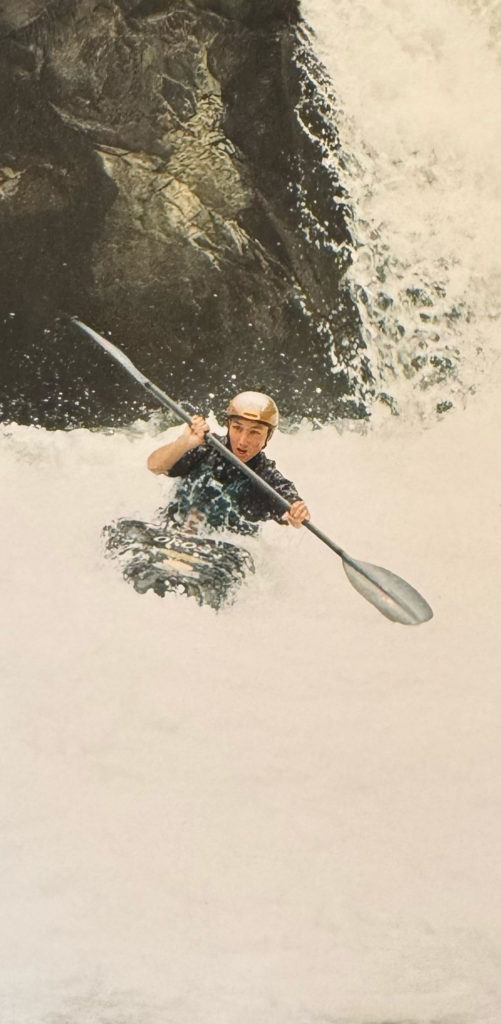
IR Triple Crown
***Backtrack one year.*** In 1998 Clem Newbold and I organized a Watauga Gorge Race. This was one of the primary river runs the crew and I did on a regular basis and we thought it would be good fun to have a race there. A well respected paddler in the North Carolina high country, Sherwood Horine, had died that year in a mountain biking accident, so we decided to dedicate the race to him. The race went off pretty well with a couple dozen people turning out. We were able to grab a few photos, but no video that year.
(Photo | 1998 | Watauga Gorge Race | Paddler Josh Hill)
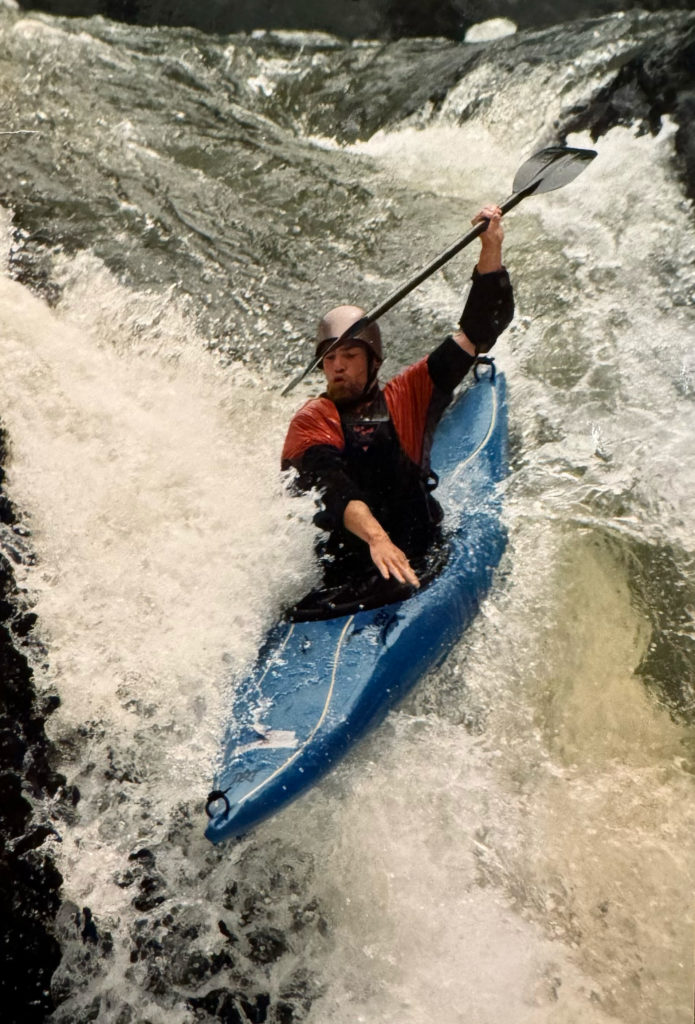
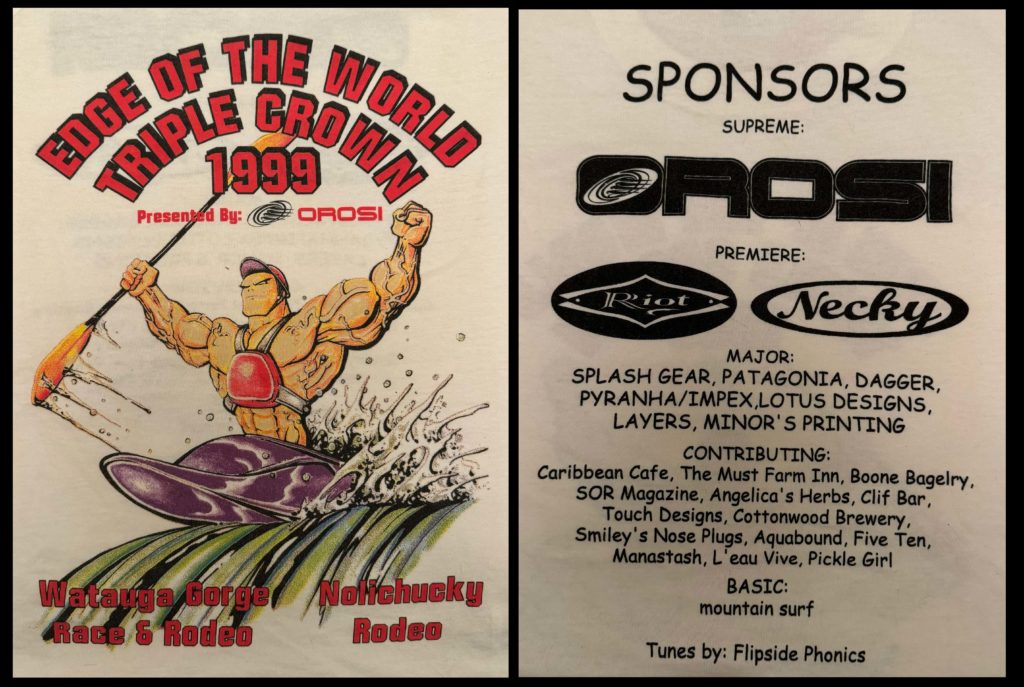
The following year, 1999, we expanded our horizons and grew the event into the Triple Crown. Clem worked at a shop called Edge of the World at the time and they wanted to headline sponsor the thing, so it was the Edge of the World Triple Crown. There was supposed to be a Watauga Gorge Race and rodeo once again but we had to cancel because of low water. The third prong of the Triple Crown was a Nolichucky River Rodeo, that year held at Big Rock, a low water spot which at the time was pretty incredible for cartwheels and the like. We had a great event down there and a pretty bad shirt. I still have it and took a pic for this article – probably should have been cancelled for that one!
Following the ’99 Triple Crown we had finally gained enough momentum to grow this event to the next level for year 2000. Freestyle kayaking was at its peak, you could find a pro paddler on every aisle of the grocery store, and everyone thought they were gonna make a living on whitewater kayaking. Lots was about to happen in paddlesports! Perception and Dagger were being bought by the same company, Wave Sport was about to get bought… by the same company, Philip Curry sold Lotus Designs to Patagonia! Millions of dollars were actually being traded… because every kid in America was about to learn how to cartwheel a kayak! Or not.
So at this stage I had gotten to know John and Kara Weld at IR pretty well as their sales rep in the southeast, and they expressed an interest in becoming the title sponsor of the Triple Crown event. Meanwhile, Daniel DeLaVergne had been telling me he wanted to hold a freestyle event out at Rock Island State Park in Tennessee, so he and I decided to join efforts and organize the Triple Crown together. To shield against liability we incorporated and formed a company called Penstock Productions, LLC, of which we were 50/50 owners. Immersion Research came on board in an effort to boost their brand awareness and take title sponsorship of the IR Triple Crown. This time the event actually had three parts which ended up being Watauga Gorge Race and Rodeo, Nolichucky Rodeo (at Secret Spot + Squirt Boat Nationals at Cowbell) and Rock Island Rodeo.
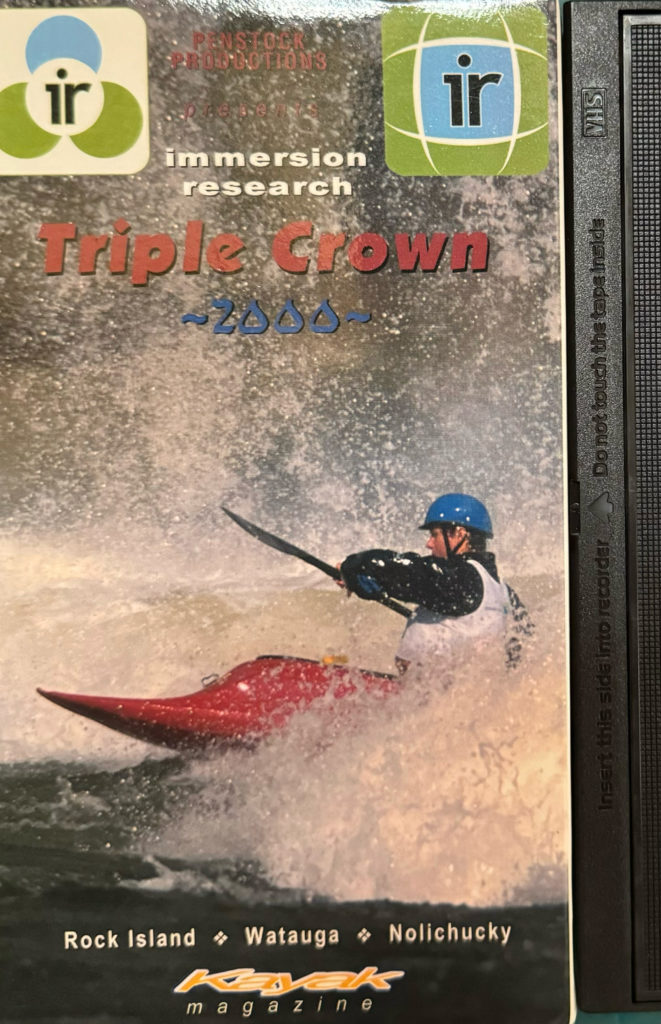
IR gave away something like $15,000 as prize money to pro kayakers that year, which was a pretty phenomenal investment in the paddlesports community, no matter how you spent it. Daniel and I brought on additional sponsors and charged entry fees in order to profit off of the event, and we made a film (VHS) of the event and sold it to retail shops. All the event history is relevant, only because it was a way to create video content. It worked pretty well, too!
In 2001 the freestyle kayakers of influence decided they liked the IR Triple Crown well enough that they wanted it to become the sanctioned series that would choose the US Team for the upcoming World Championships in Sort, Spain. So we did it. We used the judges and format they requested and the events went off pretty well and indeed chose the United States Freestyle Kayak Team. Notably, IR invested another $15-20k in prize money to pay the highest placing athletes in this event. Again, a pretty significant token of respect and loyalty to the community of whitewater paddlers. Oh, we did get a lot of great footage of this event, which showed up in a new video series that would launch later that year.
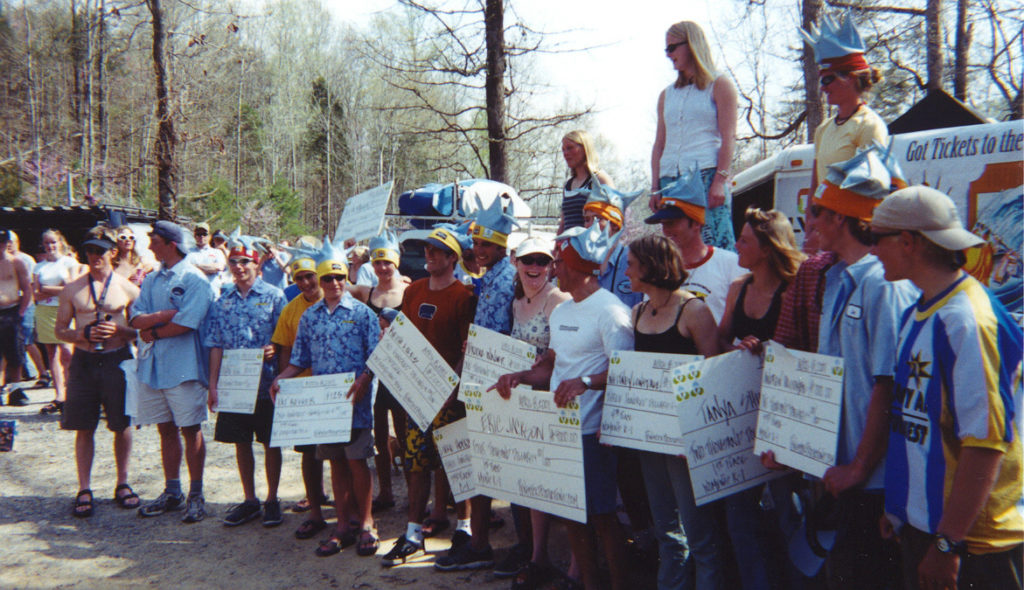
(Photo | 2001 IR Triple Crown Podium; Junior Men and Women, C1, Senior Men and Women)
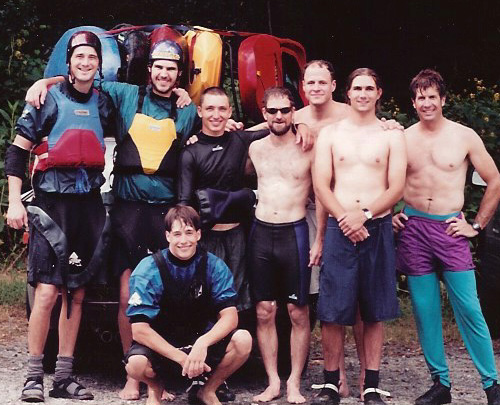
*******Back in the 1997-2000 timeframe I had been sharing with my paddling group how I would like to start a thing called a “video magazine”, and I explained how there was such a thing in skateboarding, and how a new VHS shows up at your door every quarter, it’s awesome, I keep up with the sport because of it, etc. What a cool concept, and why not do this in kayaking? Nobody really responded to my idea. Even so, it was something I thought was actually possible and I could see the path to making it happen. Daniel was the guy who came to me and said, let’s do that video magazine thing. I said okay. We did it.********
(Photo | 1998 | Boone Boating Crew on field trip to the Green)
LVM
Early in 2001 I was visiting IR in Pennsylvania. As usual, the Welds would host me at their home on the Youghiogheny River in Confluence PA and we’d get work done during the week and they would take me kayaking on nights and weekends. At this point John and Kara were helping Daniel and I organize and plan for the IR Triple Crown and they had a very talented graphic designer named Tom Windham who was creating logos and magazine ads for the event. The Welds knew about the video magazine idea and were very supportive. What the heck were we going to name it? That was the question. John and I took a walk one evening and were spitballing all kinds of names, and all sorts of other bullshit, and one of us said Lunch. Lunch Video Magazine. LVM. That sounds good, doesn’t it? What does it mean? We didn’t know. All I knew was I didn’t want to call it something obvious like Kayak Video Magazine. I wanted something a little odd, something that made you question and think about it. Daniel reluctantly agreed to the name, and we were off to the races. Tom Windham designed a cool logo for us which we used on every VHS, DVD, decals, Tee Shirts, posters, ads, you name it. However, Joey Hall was our in-house graphic designer at Penstock Productions and did 99% of our graphics for the videos, shirts, cover art, the infamous LVM ‘Zine, and all the querky ads we ran in AW Journal. And now, we had signed ourselves up to make a brand new kayaking film every quarter. Four times a year we had to shoot, edit and create a new LVM. The process would never end, it was a pretty fun and exciting time. This was our own little social media revolution and our medium was something tangible, in the form of VHS tapes, DVDs and many social events where we would share the newest video at theaters, breweries, trade shows and industry events.
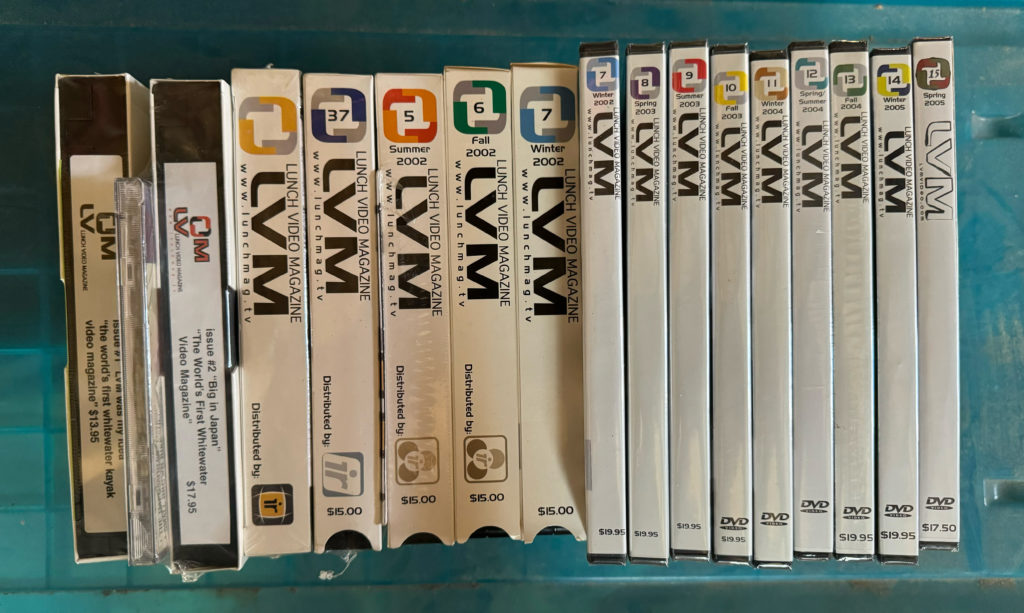
(Photo | Collection of the first 15 LVMs, the ones I was involved with before I sold my half of the company.)
There is a whole heck of a lot I could talk about that went on during this project, this adventure, this beast we created. It did become pretty popular (in kayaking terms), we had a lot of companies, people, friends and family who supported us in this venture. But there’s one thing that is clear to me. It wasn’t special. I mean, we weren’t special for doing it, and the people in the videos weren’t special, at least not in the sense of being more special than any other kayaker, or any other kayaker making videos. We were just people who loved to kayak and loved to tell the story of kayaking, rivers and water. And we were lucky to have happened upon this time and place. As for me, I was just a guy holding a camera.
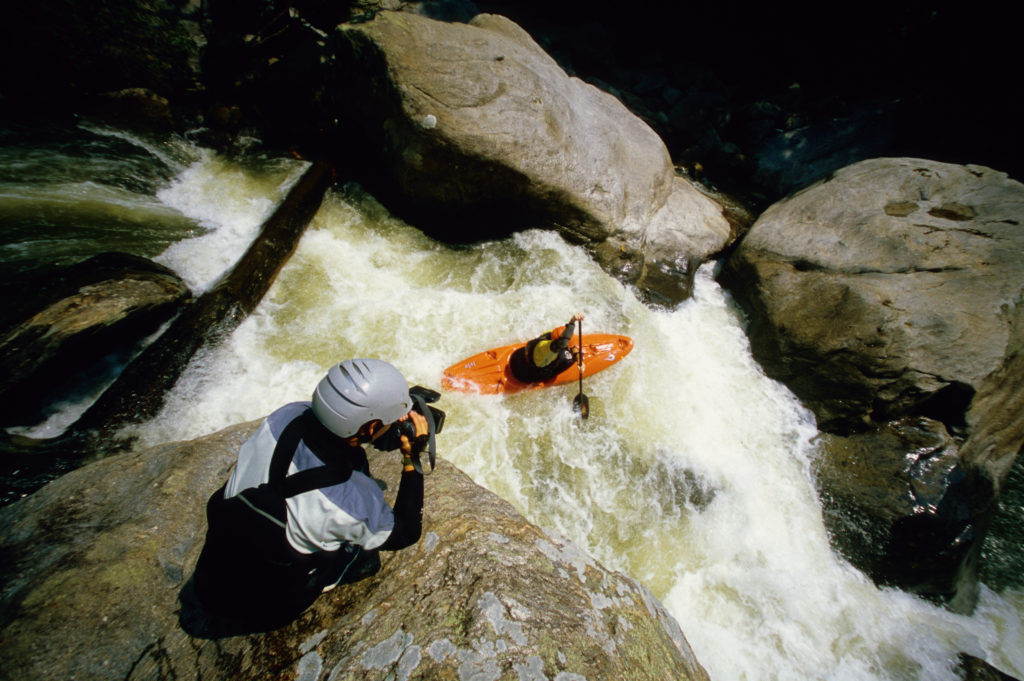
(Photo: Ray Cotton | That’s me holding the camera for Brian Miller at Go Left on the Green | 2006)
My path since the early 2000’s has continued in the outdoor industry and has included more time behind and in front of a camera. In 2005 I sold my half of Penstock Productions and started my own business called Effort, Inc. I helped create some more kayak films but have focused more of my time on product-oriented videos. These videos help support my sales rep business at Effort Inc, my customers, and ultimately help feed my family. Anytime I pick up a camera or sit down to edit, I enjoy the creative process each time. Not sure I ever became a master at this skill, but it’s one of a few things I’m decent at. I can indeed hold a camera. Most people can.
Written by Spencer Cooke

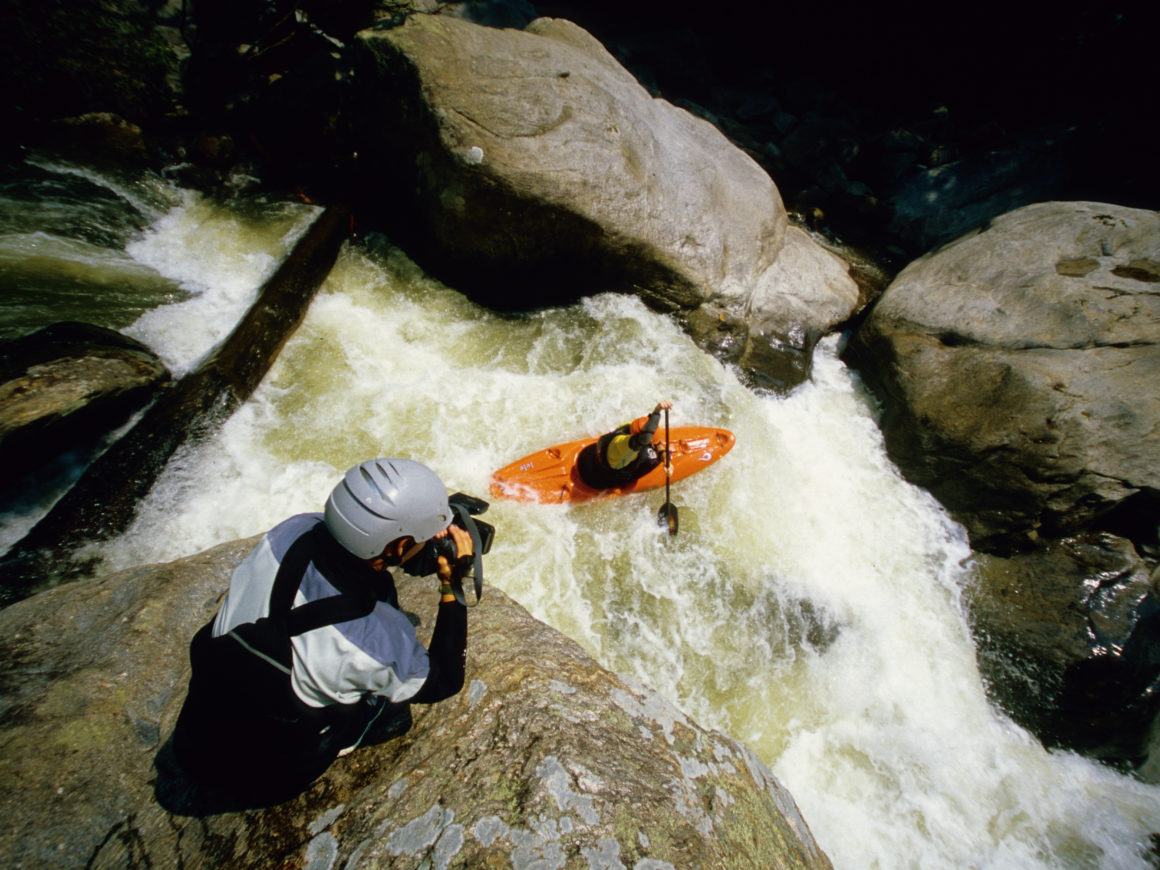
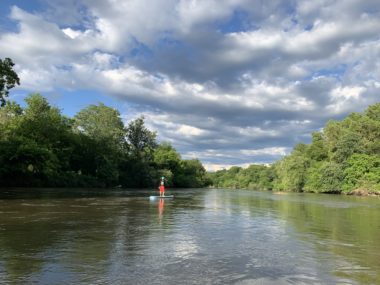









2 comments
Great article Spencer and thanks for the share. I grew up on these videos and loved everyone. As a young kayaker I hoped to one day be in one of the videos. They were inspirational. Thanks for all of the hard work and great content over the years.
Hey Ty, thank YOU for your incredible enthusiasm for kayaking and for all you’ve contributed to the outdoor community. It isn’t an easy place to work but it’s a fun place to play. I think you know that. Hope to see you out paddling one day. – Spencer